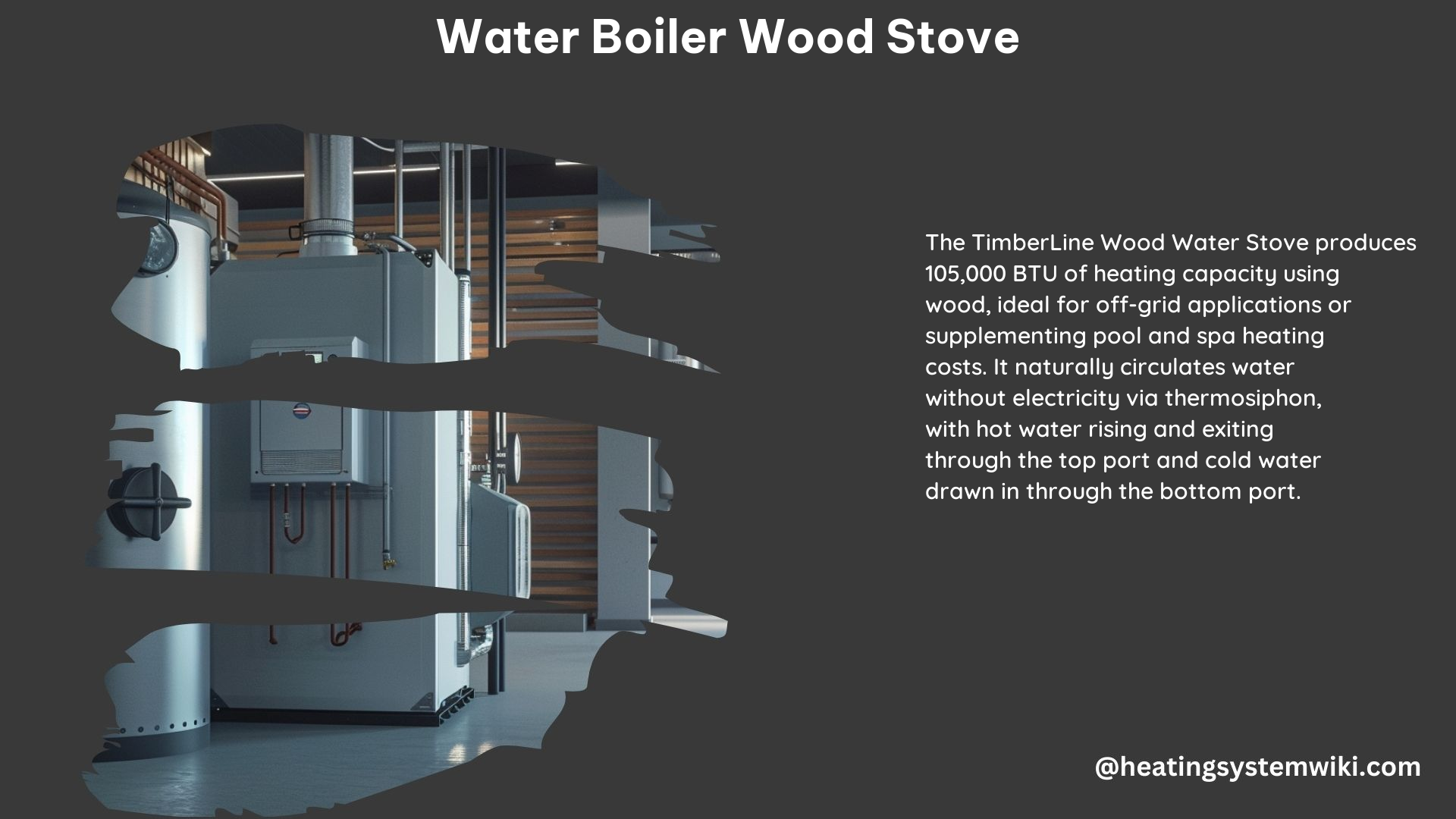The water boiler wood stove is a versatile and eco-friendly heating solution that can provide both warmth and hot water for your home. Crafted from high-quality 1mm thick stainless steel, these compact units measure 210 x 140 x 320mm and weigh a mere 1.6kg, making them easy to install and use. With a 3-liter water capacity, the water boiler wood stove can efficiently transfer heat from the wood-burning fire to your home’s water supply, ensuring a reliable source of hot water for your daily needs.
Ensuring Safe Water Temperature: Implementing Effective Control Systems
To prevent the water temperature from exceeding the recommended 200°F (93°C) limit, it is crucial to implement a comprehensive temperature control system. This can be achieved through the integration of the following components:
Thermostats and Temperature Sensors
Install high-precision thermostats and temperature sensors throughout the system to continuously monitor the water temperature. These devices can be strategically placed at various points, such as the boiler inlet, outlet, and key distribution points, to provide a comprehensive overview of the system’s thermal performance.
Automated Valves and Flow Regulators
Pair the temperature monitoring system with automated valves and flow regulators that can adjust the heat input or water flow rate in response to changes in temperature. These intelligent components can quickly react to prevent the water from exceeding the safe temperature threshold, ensuring a consistent and comfortable water supply.
Programmable Logic Controllers (PLCs)
Integrate a programmable logic controller (PLC) into the system to provide advanced temperature control and monitoring capabilities. PLCs can be programmed to execute complex algorithms, allowing for precise regulation of the water temperature, flow rates, and other critical parameters.
Redundant Safety Measures
Incorporate redundant safety features, such as high-temperature cutoff switches and pressure relief valves, to provide an additional layer of protection against overheating or overpressure. These failsafe mechanisms can automatically shut down the system or divert the water flow in the event of an emergency, safeguarding your home and family.
Efficient Heat Transfer: Optimizing Heat Exchanger Design

The heart of the water boiler wood stove system is the heat exchanger, which is responsible for transferring the thermal energy from the wood-burning fire to the water. To ensure maximum efficiency and heat transfer, consider the following design elements:
Plate Heat Exchangers
Plate heat exchangers feature a series of thin, corrugated metal plates that create a large surface area for heat transfer. These compact and highly efficient units can handle the high temperatures generated by the wood-burning stove, making them an excellent choice for water boiler applications.
Tube-in-Tube Heat Exchangers
Alternatively, tube-in-tube heat exchangers utilize concentric tubes, with the hot flue gases passing through the inner tube and the water flowing through the outer tube. This design allows for efficient heat transfer while maintaining a compact and durable construction.
Counterflow Configuration
Regardless of the heat exchanger type, it is recommended to configure the system in a counterflow arrangement. In this setup, the hot flue gases and the water flow in opposite directions, maximizing the temperature differential and enhancing the overall heat transfer efficiency.
Thermal Insulation
Ensure that the heat exchanger and the surrounding piping are adequately insulated to minimize heat loss and maintain the desired water temperature. High-performance insulation materials, such as mineral wool or rigid foam, can be used to create a well-insulated system.
Maintaining Consistent Water Flow: Regulating the System
Proper water flow regulation is essential for ensuring even heating and preventing hot spots or localized overheating within the water boiler wood stove system. Implement the following measures to achieve consistent water flow:
Variable-Speed Pumps
Utilize variable-speed pumps that can adjust the water flow rate based on the system’s heat demand. These intelligent pumps can respond to changes in temperature or load, maintaining the optimal flow for efficient heat transfer.
Flow Meters and Control Valves
Integrate flow meters and control valves into the system to monitor and regulate the water flow. These components can be used to fine-tune the flow rate, ensuring that the water is heated evenly and within the desired temperature range.
Hydraulic Balancing
Perform a hydraulic balancing of the system to ensure that the water flow is distributed evenly among the various components, such as the electric furnaces and water heater. This can involve adjusting valve settings, modifying pipe sizes, or installing balancing devices to optimize the system’s performance.
Comprehensive Maintenance and Inspection
Regular maintenance and inspection of the water boiler wood stove system are crucial for maintaining safe and efficient operation. Follow these guidelines to keep your system in top condition:
Boiler Cleaning and Inspection
Regularly clean the wood boiler to remove any buildup of ash, soot, or creosote. Inspect the internal components, such as the firebox, heat exchanger, and flue, for signs of wear or damage, and address any issues promptly.
Pipe and Insulation Inspection
Carefully inspect the hot water pipes and insulation for any signs of deterioration, leaks, or damage. Replace worn-out insulation and address any pipe issues to prevent heat loss and potential water damage.
Valve and Pump Maintenance
Regularly service the valves, pumps, and other mechanical components to ensure they are functioning correctly. This may include cleaning, lubricating, or replacing parts as needed to maintain optimal performance.
System Monitoring and Documentation
Establish a comprehensive monitoring and documentation system to track the system’s performance, maintenance activities, and any issues that arise. This will help you identify trends, anticipate potential problems, and maintain a well-documented history of the system’s operation.
By implementing these comprehensive measures, you can ensure the safe, efficient, and reliable operation of your water boiler wood stove, providing a sustainable and cost-effective heating solution for your home.
References:
- Bell Tent. (n.d.). Woodburning Stove Water Heater. Retrieved from https://belltent.com/products/woodburning-stove-water-heater
- InterNACHI. (n.d.). Water Stoves. Retrieved from https://www.nachi.org/waterstoves.htm
- Lehman’s. (n.d.). Hot Water – System Two Wood-Fired Water Heater. Retrieved from https://www.lehmans.com/product/hot-water-system-two-wood-fired-water-heater
